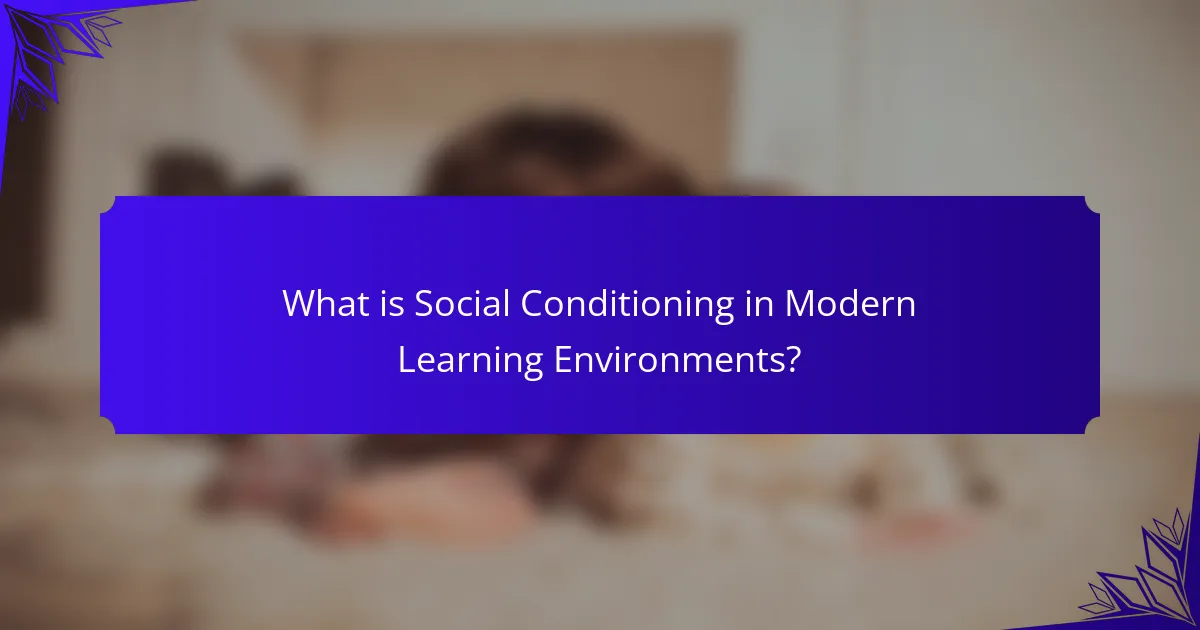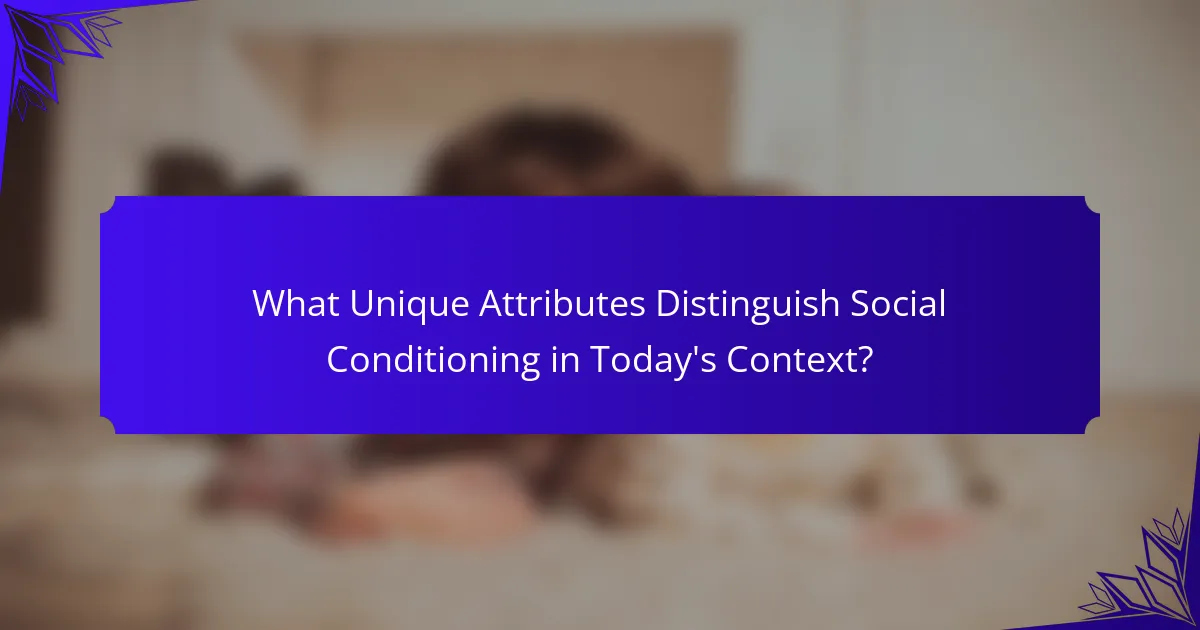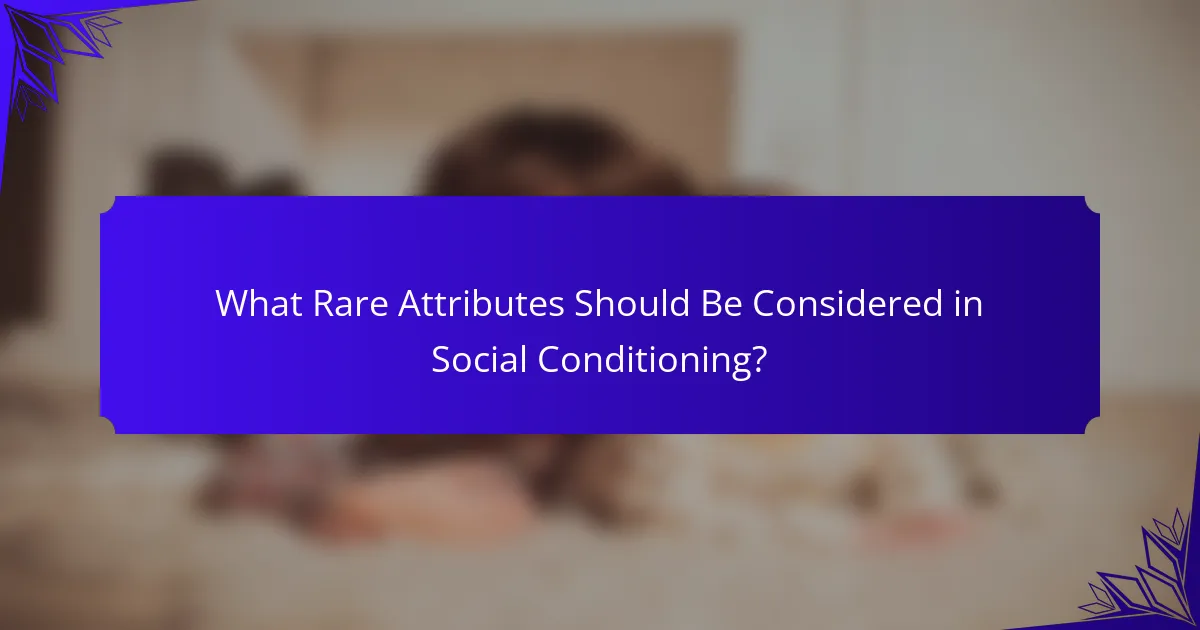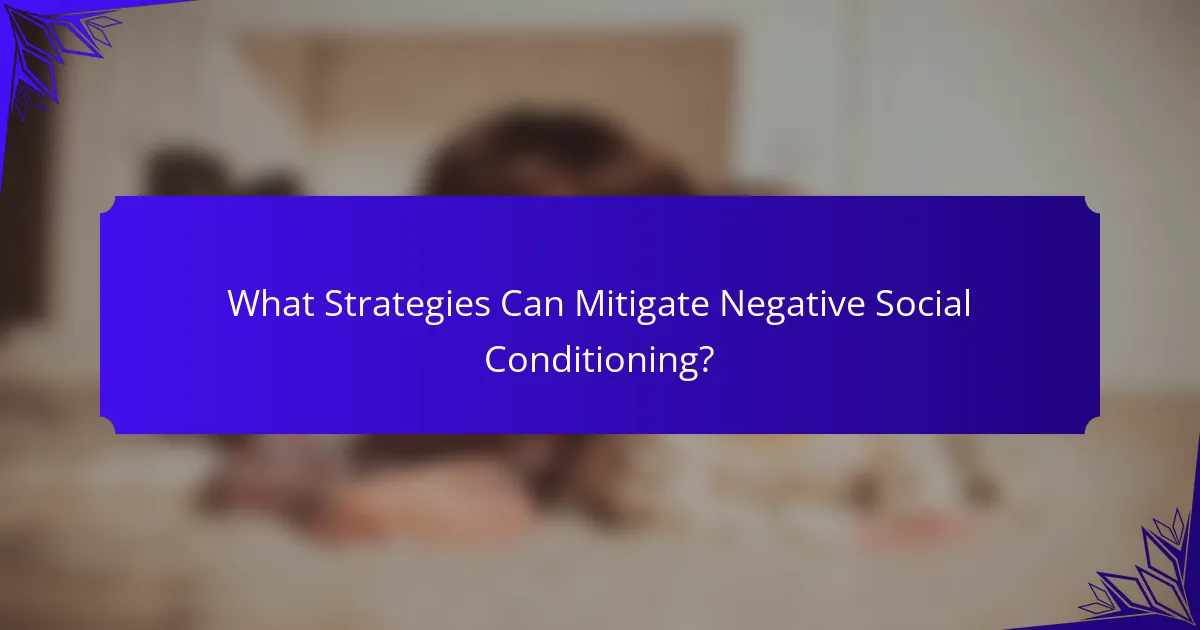Understanding how bad company can corrupt good morals is essential in modern learning environments. Social conditioning influences students’ values and behaviors, often leading to conformity or deviance. Key factors include peer dynamics, digital influence, and educational frameworks. Strategies to mitigate negative effects involve fostering positive relationships and promoting critical thinking.

What is Social Conditioning in Modern Learning Environments?
Social conditioning in modern learning environments refers to how social interactions influence students’ values and behaviors. This phenomenon shapes moral perspectives, often leading to conformity or deviance based on peer dynamics. For instance, students may adopt negative behaviors from peers, impacting their academic integrity and ethical standards. Understanding this influence is crucial for educators aiming to foster positive learning spaces. The role of positive role models can counteract adverse effects, promoting resilience against negative social pressures.
How Does Social Conditioning Influence Moral Development?
Social conditioning significantly shapes moral development by influencing behaviors and values within learning environments. Negative peer influences can lead to compromised morals, as individuals may prioritize acceptance over ethical standards. Studies show that children exposed to negative social cues often adopt similar behaviors, undermining their moral foundations. This highlights the importance of fostering positive relationships and environments that promote ethical decision-making.
What Role Does Peer Influence Play in Learning Settings?
Peer influence significantly shapes learning environments by affecting students’ behaviors, attitudes, and academic performance. Positive peer interactions can enhance motivation and engagement, while negative influences may lead to distractions and poor decision-making. Research indicates that students are more likely to adopt behaviors modeled by their peers, highlighting the importance of fostering a supportive peer culture in educational settings. For instance, collaboration among students often results in improved learning outcomes, demonstrating the unique attribute of peer support in enhancing educational experiences.
What Are the Mechanisms of Peer Pressure?
Peer pressure operates through social influence, shaping behaviors and attitudes within groups. It manifests in various mechanisms, such as conformity, where individuals adjust their actions to align with group norms. Another mechanism is compliance, where people yield to group pressure for acceptance, often compromising their values. Additionally, social validation plays a critical role, as individuals seek approval from peers, reinforcing specific behaviors. Understanding these mechanisms is essential for addressing the impact of peer pressure in modern learning environments.
How Do Cultural Norms Shape Moral Standards?
Cultural norms significantly influence moral standards by shaping perceptions of right and wrong. Social conditioning in modern learning environments often reflects these norms, leading individuals to adopt behaviors aligned with their cultural context. For instance, peer influence can reinforce or challenge existing moral beliefs, resulting in varied ethical outcomes. Understanding these dynamics is crucial for fostering environments that promote positive moral development.

What Are the Universal Attributes of Social Conditioning?
Social conditioning universally influences behavior and morals through environmental factors, peer interactions, and cultural norms. Key attributes include social influence, conformity, and reinforcement mechanisms. Social influence shapes individual beliefs and actions based on group dynamics. Conformity leads to alignment with group values, often at the expense of personal morals. Reinforcement mechanisms, such as rewards or punishments, further solidify learned behaviors. Understanding these attributes is vital in modern learning environments to foster positive moral development.
How Do Social Interactions Affect Learning Outcomes?
Social interactions significantly influence learning outcomes by shaping attitudes and behaviors. Negative peer influences can lead to diminished motivation and ethical standards among learners. Research shows that social conditioning in educational settings can either enhance or hinder academic performance. For instance, students surrounded by supportive peers tend to exhibit higher engagement and achievement levels. Conversely, those in toxic environments may struggle with self-esteem and academic integrity. Understanding these dynamics is crucial for fostering positive learning experiences.
What Are the Common Behavioral Changes Associated with Negative Peer Influence?
Negative peer influence often leads to behavioral changes such as increased risk-taking, substance abuse, and diminished academic performance. These changes stem from the desire for social acceptance and conformity. As a result, individuals may adopt negative habits that conflict with their values and goals. Studies indicate that adolescents exposed to negative peer pressure are more likely to engage in delinquent behaviors, highlighting the impact of social conditioning in learning environments.

What Unique Attributes Distinguish Social Conditioning in Today’s Context?
Social conditioning today is distinguished by unique attributes such as digital influence, peer dynamics, and educational frameworks. Digital influence shapes behaviors through social media, where exposure to diverse perspectives can reinforce or challenge moral values. Peer dynamics play a crucial role, as individuals often conform to group norms, impacting their ethical decisions. Educational frameworks now prioritize emotional intelligence and critical thinking, promoting resilience against negative social conditioning. These attributes reveal the complexities of moral development in contemporary learning environments.
How Have Digital Environments Altered Social Conditioning?
Digital environments have significantly shifted social conditioning by promoting diverse influences and altering interactions. Online platforms expose individuals to varying moral frameworks, which can challenge traditional values. For instance, social media often amplifies peer pressure, leading to conformity over personal beliefs.
Moreover, the anonymity of digital spaces can encourage behaviors that diverge from established morals. This phenomenon raises concerns about the long-term impact on societal norms and individual ethics. Studies indicate that frequent exposure to contrasting viewpoints can either enhance critical thinking or lead to moral relativism, depending on the context.
In educational settings, digital tools facilitate collaborative learning but may also introduce distractions that undermine focus and ethical reasoning. As a result, understanding the dynamics of social conditioning in these environments is crucial for fostering positive moral development.
Ultimately, the interplay between digital environments and social conditioning demands ongoing examination to navigate the complexities of modern morality.
What Are the Impacts of Social Media on Moral Perception?
Social media significantly influences moral perception by shaping social norms and values. It exposes users to diverse viewpoints, often leading to moral relativism. The constant interaction with varying opinions can dilute traditional moral standards, fostering a culture where ethical boundaries are blurred. As a result, individuals may adopt behaviors that align with popular sentiment rather than personal convictions. Studies indicate that frequent social media use correlates with increased desensitization to moral issues, impacting decision-making and social responsibility.

What Rare Attributes Should Be Considered in Social Conditioning?
Social conditioning in modern learning environments can be influenced by rare attributes such as the impact of peer influence on moral development, the role of cultural narratives in shaping ethical perspectives, and the significance of emotional intelligence in interpersonal interactions. Understanding these aspects can reveal how subtle social cues affect individual behavior and decision-making.
How Do Exceptional Cases of Social Conditioning Occur?
Exceptional cases of social conditioning occur when individuals are influenced by negative peer groups, leading to compromised morals. Factors include social pressure, desire for acceptance, and exposure to toxic behaviors. These influences can reshape values and decision-making processes, often resulting in long-term consequences. Understanding these dynamics is crucial for fostering positive environments in modern learning settings.
What Are the Long-Term Effects of Negative Peer Influence?
Negative peer influence can lead to long-term effects such as diminished self-esteem, increased risk of substance abuse, and poor academic performance. These outcomes often stem from social conditioning that encourages conformity to negative behaviors. Over time, individuals may adopt maladaptive coping mechanisms and develop a distorted sense of self-worth. Studies show that consistent exposure to negative influences can hinder personal growth and lead to lasting emotional distress.

What Strategies Can Mitigate Negative Social Conditioning?
To mitigate negative social conditioning, individuals can adopt strategies like fostering positive relationships, promoting critical thinking, and setting clear personal values. Engaging in environments that encourage supportive interactions can enhance moral resilience. Additionally, developing self-awareness helps identify and counteract harmful influences. Seeking mentorship can provide guidance, reinforcing constructive behaviors and attitudes.
How Can Educators Foster Positive Peer Interactions?
Educators can foster positive peer interactions by promoting inclusivity and collaboration. Encouraging group activities enhances social skills and builds trust among students. Implementing structured peer feedback mechanisms allows students to communicate effectively and learn from one another. Additionally, modeling respectful communication sets a standard for behavior in the classroom, reinforcing positive interactions.
What Best Practices Can Parents Implement to Support Moral Development?
Parents can implement several best practices to support moral development by fostering positive social interactions. Encourage open communication to discuss values and ethical dilemmas. Promote empathy through community service, allowing children to experience diverse perspectives. Set clear expectations for behavior and model integrity in daily actions. Create a supportive environment that reinforces positive relationships, helping children navigate social influences effectively.
What Common Mistakes Should Be Avoided in Addressing Social Influence?
To effectively address social influence, avoid common mistakes such as ignoring peer pressure, dismissing the impact of environment, underestimating social media’s role, and failing to foster critical thinking. Recognizing these factors is essential for promoting positive social conditioning in modern learning environments.
How Can Individuals Strengthen Their Moral Compass in Challenging Environments?
Individuals can strengthen their moral compass by actively engaging in self-reflection and surrounding themselves with positive influences. Establishing a clear set of personal values helps navigate challenging environments.
Developing resilience through mindfulness practices enhances decision-making. Engaging in discussions about ethics with trusted peers fosters moral clarity. Seeking mentorship can provide guidance and reinforce ethical standards.
Participating in community service cultivates empathy and reinforces moral principles. Exposure to diverse perspectives broadens understanding, aiding in moral development.
Consistent practice of integrity in daily actions solidifies moral foundations. Recognizing and distancing from negative influences is crucial for maintaining a strong moral compass.


